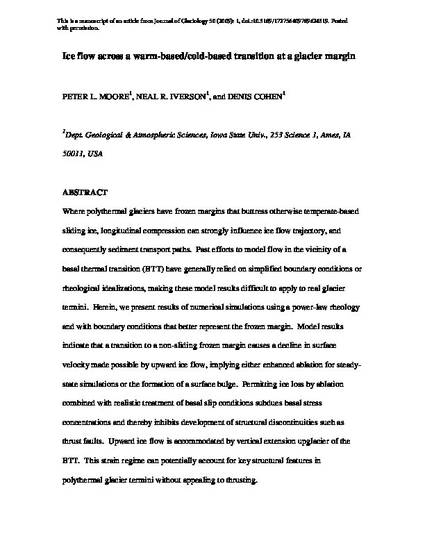
Where polythermal glaciers have frozen margins that buttress otherwise temperate-based sliding ice, longitudinal compression can strongly influence ice flow trajectory, and consequently sediment transport paths. Past efforts to model flow in the vicinity of a basal thermal transition (BTT) have generally relied on simplified boundary conditions or rheological idealizations, making these model results difficult to apply to real glacier termini. Herein, we present results of numerical simulations using a power-law rheology and with boundary conditions that better represent the frozen margin. Model results indicate that a transition to a non-sliding frozen margin causes a decline in surface velocity made possible by upward ice flow, implying either enhanced ablation for steady-state simulations or the formation of a surface bulge. Permitting ice loss by ablation combined with realistic treatment of basal slip conditions subdues basal stress concentrations and thereby inhibits development of structural discontinuities such as thrust faults. Upward ice flow is accommodated by vertical extension upglacier of the BTT. This strain regime can potentially account for key structural features in polythermal glacier termini without appealing to thrusting.
Available at: http://works.bepress.com/peter_moore/9/

This is a manuscript of an article from Journal of Glaciology 50 (2009): 1, doi.: 10.3189/172756409789624319. Posted with permission.